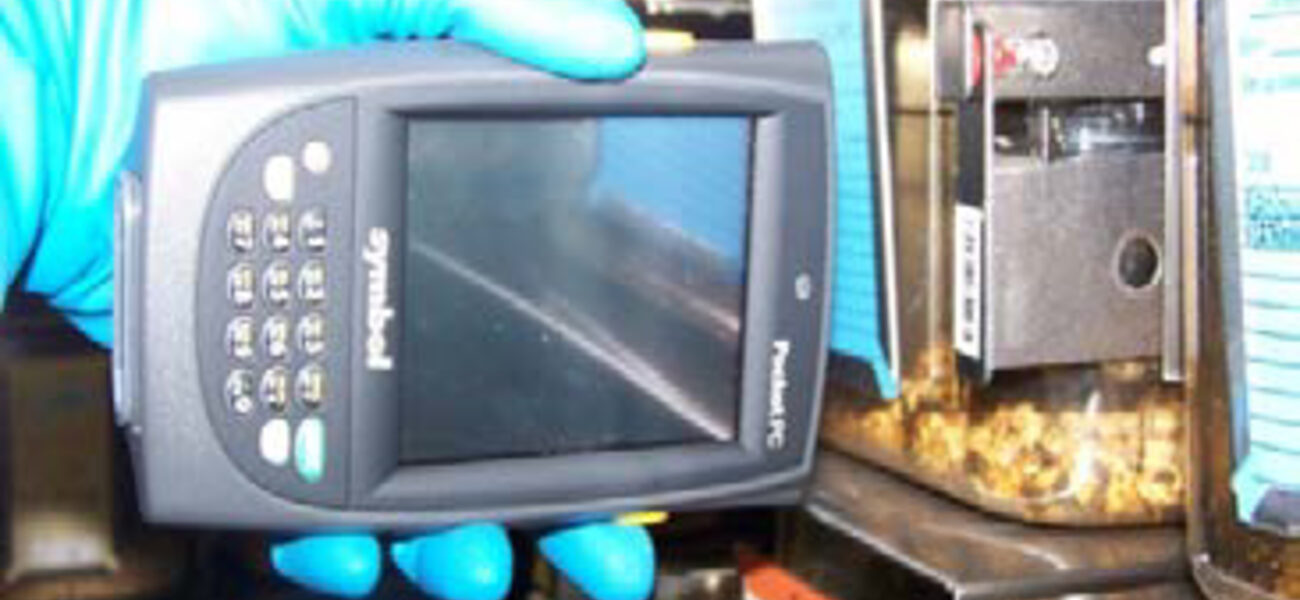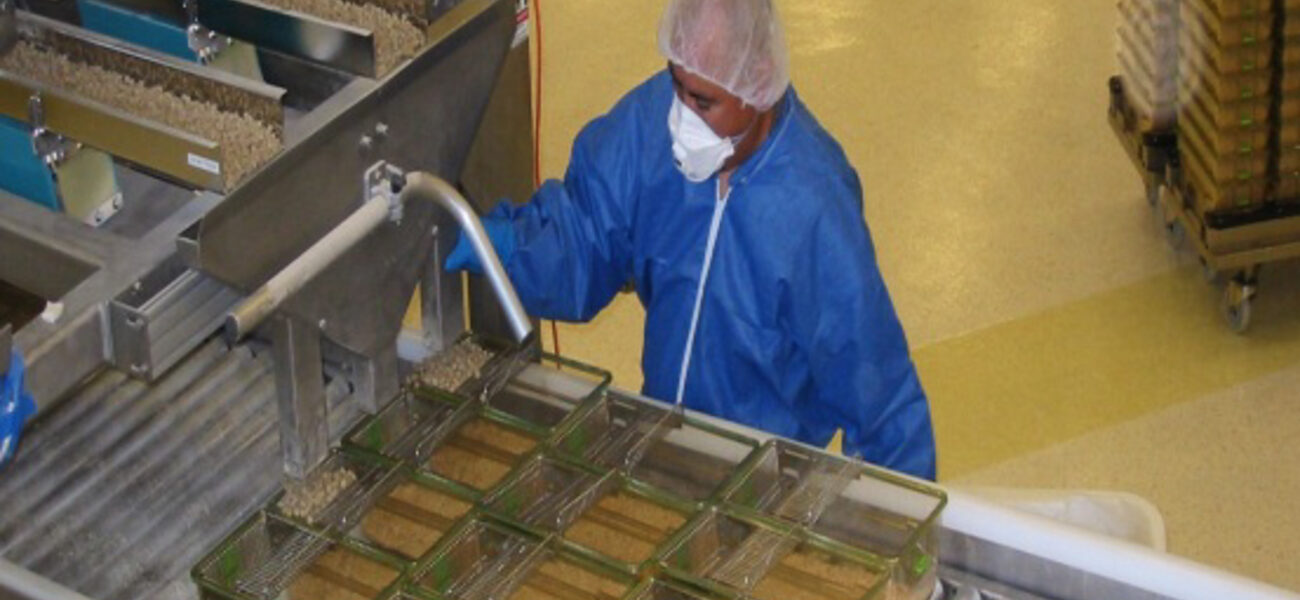Genentech’s custom-built colony management system (CMS) is allowing the organization to dramatically improve efficiency and reduce waste at its massive 150,000-sf vivarium facility east of San Francisco. In its first year of implementation, the system reduced operational inefficiencies by more than 150 percent and saved the organization more than $2 million, while also improving living conditions for mice and empowering husbandry and colony management staff. Developed in-house at a cost of approximately $1 million, the CMS is a flexible bioinformatics system that uses a combination of barcode technology, mobile devices, and a relational database to streamline operations at the facility, which cares for the genetic animal models used by Genentech scientists to develop treatments for a wide range of diseases.
“We more than paid for development of the system within the first year,” says Dr. Rhonda Wiler, senior director of the mouse genetics department at Genentech. “Since then, the benefits and additional savings have only improved. It makes doing the work a lot more pleasant for our staff. It also increases transparency by providing real-time information on the status of their colonies to the investigators. Now they have the ability to know exactly what is going on in their colonies at any given moment.”
Based on volume and complexity, the Genentech vivarium facility is one of the largest breeding operations for genetic research mice in the world. It produces more than 30,000 pups a month, representing a thousand different genetic lines, and supporting 550 investigators with more than 58,000 genotypes analyzed monthly. Keeping track of this many animals while continually running genetic analysis assays and ensuring a humane living environment for the animals is a labor- and resource-intensive process that generates a tremendous amount of data.
“The more genetically complex a model is, the more cages it occupies, the more reactions are necessary, and the more data it generates,” says Wiler. “Right now, we have over one million records in the system—including 100,000 live-animal records at any given time—and the CMS handles it all without slowing down.”
Prior to creation of the CMS, Genentech staff maintained records manually, storing them in binders and transferring them to Excel. There were a lot of moving parts and a high potential for human error.
With the new database-driven CMS platform all the cage cards, and cage locations have barcodes, and staff members can both access and enter information directly using tablets while they’re in the room.
“Now we understand what is going on across the entire facility, including how we’re managing workloads and how we’re managing colonies,” says Wiler. “We know where every cage is, exactly what animals are in that cage, what their genotypes are, and what is planned for them. It is all available in real time.”
Reducing Waste and Improving Efficiency
With the added transparency and data came the opportunity to identify and reduce waste. To keep living environments clean, cage changes are typically scheduled once every other week on a rack-by-rack basis. As a result, cages sometimes were changed even though they had just been changed due to weaning, receipt, transfer, or separation. When Genentech staff noticed that the system of changing entire racks every two weeks resulted in the unnecessary cleaning of more than 6,000 cages, wasting more than a ton of unconsumed food weekly, Wiler tasked the Bioinformatics and Computational Biology department with creating an algorithm based on cage occupancy and last change date for cage-change procedures. The result was a new software module and interface called Directed Cage Change (DCC) that automates the process through a pre-set series of schedules and prompts that allows for a cage-changing program based on occupancy rather than a fixed schedule.
“We capitalized on the CMS database, which already knows in detail how many animals are in each cage and exactly where those cages are,” says Wiler. “It also knows when cages are newly occupied from processes such as weaning and receiving, or will be removed because of culling, because these events are recorded in the system and can be considered a cage change. We harnessed all of that information to create an interface for managing our cage-change process.”
Now, instead of changing entire racks of cages on a strictly fixed schedule, the DCC software tracks each cage individually and sets a schedule based on occupancy and the last change date. It also records unscheduled changes, and updates each cage’s history. The software uses a tablet interface, allowing staff members to easily select a specific rack and see a map indicating which cages need to be changed. This reduced the number of cage-changes each week by 40 percent, saving considerable food, bedding, water, electricity, and labor. While this modification to the CMS data system cost $40,000 to develop, it reduced operating costs by more than an estimated $411,000 per year.
“It also lets us know what to expect regarding how many cages are due to be changed for the next week, so we can allocate appropriate staffing resources,” says Wiler. “This really helps us manage the facility more effectively, not just reduce the cage changing.”
The Power of Automation
In addition to storing and managing all colony records in real time, the system also controls daily task management with automated event scheduling and relates to other databases, such as the protocol management system.
“The PDA or tablet interface we use at the cage level drives all of our tasks,” says Wiler. “So we know exactly when to wean, sample, or identify the mice in a litter. It’s all scheduled for our staff within the software.” In addition, CMS generates assay assembly instructions for the liquid handling robots. The system also tracks the sample from the mouse to the genetic analysis lab and automatically reports the genotypes to the animal's record.
Real-time data collection and the use of tablet technology allow for automated census, paperless processes for ordering/receiving, and health tracking, which saves considerable time. In addition, work lists can be viewed for all staff across the entire operation, simplifying the distribution of workload, scheduling and staff coverage during absences.
“Since the system allows the staff to change a cage anytime during the week it’s due to be changed, they can schedule their own work, which is empowering. This results in less disruption of the cage environment and improves the wellbeing of the mice,” says Wiler.
Wiler recommends considering automation when there is a high volume of repetitive tasks done in a consistent way. In addition to the data management system, other automation was implemented in her facility, including robotics in cage processing and the genetic analysis lab and the use of conveying systems—similar to those used in the packaging industry—to supply food and bedding and remove dirty bedding. This has resulted in an improved work environment, increased efficiency, and fewer ergonomic injuries.
Lessons Learned
Genentech first implemented the CMS in 2007 as part of an initiative to manage the increasing numbers of genetically modified mouse models. In addition to reducing inefficiencies by more than 150 percent, which allowed the facility to double the number of breeding colony cages without increasing colony resource staff size, the system also saved Genentech millions in operating costs. But it required a collective development effort among the end users, the resource staff, and the computer scientists.
“It wasn’t just a matter of collecting all our criteria, building a system, and then implementing it,” says Wiler. “It was an iterative process that required good strategies for change management. Our goal was to keep it simple and familiar, so everyone could be quickly trained to use the system.”
Wiler also points out that, while a system like CMS may not be the solution for every facility, developing operational strategies that minimize waste can have a significant impact on even a small scale. In this case, other tools can be used to achieve similar outcomes without investing in the development of a relational database system.
“Every facility is unique,” she says. “It’s really a matter of what makes sense for your operation. The key is to develop adaptable systems and processes. Continually rethink if you are solving the right problem. Redefine by considering the magnitude, consider if it make sense to do it differently. And then reapply.”
By Johnathon Allen
This report is based on a presentation by Rhonda Wiler at the Tradeline 2013 Animal Research Facilities conference.



